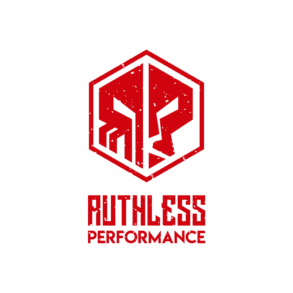An unfortunate setback in the science of human performance is the large emphasis currently placed on muscle physiology as a means of maximizing performance. While obviously the muscles play a critical role in athleticism, the muscular system is completely at the whim of the nervous system; the junction of these two is known categorically as the Neuromuscular System.
In an ongoing effort to inform our athletes, parents, coaches, and general audience, we will be regularly detailing some specific segment of the Nervous System or the aforementioned Neuromuscular System. These are the areas of human performance which should be of primary interested to clinicians and academics rather than the simplistic if-A-than-B relationship of the muscular system as it works when viewed in isolation.
The Hypothalamic-Pituitary-Adrenal Axis (HPA Axis)
A critical element to training progress is the management, application, and adaptation to stress. Many will correctly point out that the improvements associated with practice and/or exercise come not in the training bouts themselves, but in the subsequent rest and tissue regeneration/ restoration. As a coach tries to monitor training loads and competition frequency to optimize the stress response, the HPA Axis performs this function internally.
The HPA Axis refers to the interaction of 3 fundamental structures. The Hypothalamus–a part of the limbic system which up/down regulates various hormone levels to maintain homeostasis (the drive to maintain stable internal states) in the body. Also it is comprised of the Pituitary Gland, which may be the most widely-known of the 3 parts; the pituitary is responsible for a wide array of physiochemical reactions like water retention, sexual development, and importantly for the HPA Axis, stress responses. Lastly, the Adrenal Glands function as the response to deviations in stress levels. Among others, the adrenals generate both of the stress hormones adrenaline and cortisol.
To bring these three structures together, think of it like this: the Hypothalamus wants to maintain a cohesive and stable environment among all internal systems. The pituitary manages stress and interacts with the hypothalamus to mitigate deviations to equilibrium. The adrenals generate the chemical messages (hormones) necessary for the stress response to occur and bring about homeostasis.
The HPA Axis and Performance
As alluded to, performance enhancement comes in the form of an adaptation to a stressor. In the case of an athlete, that stressor would be a rigorous training bout. With this in mind and a better understanding of the HPA Axis, it should now be a bit more obvious how managing and overcoming training stressors relates to a neuroendocrine system that deals directly with stress.
Through various methods, we can optimize the function of the HPA Axis to better deal with training stressors.
The role that the pituitary gland plays changes drastically in scale throughout adolescence, during puberty, and into the late teenage years. To maximize an athletes long-term potential, a great deal of care should be placed around ensuring an optimal stress load throughout this time.
On one hand, a young athlete may be under-stressed, as in the case of a single-sport and otherwise sedentary individual. This particular athlete’s long-term ability to generate stress hormones would blunted. In contrast to this, an athlete of the same age who competes year-round in the same sport, in addition to various other roles and obligations may be overstressed. A sign that over-stress is occuring is athlete burnout. The long-term biochemical response to prolonged periods of stress in adolescence can be a lifelong hypersensitivity to stress. This minimizes the total training load an athlete can undergo, lessening potential athletic adaptations, and increasing the overall likelihood of mood-related illnesses (like depression or anxiety).
The solution to this is an intermediate stress load to maximize stress tolerance and sensitivity. This can be done by ensuring a young athlete is engaged in multiple types of sports, only specializing in a singular sport with age.
As athletes develop they are still susceptible to changes in the HPA Axis. Recreational drugs and alcohol can impede the ability of the adrenals to produce adrenaline under normal stress environments like sport-specific training. This, in theory, seems to indicate a higher training load would be needed to achieve similar results.
Regardless of an athletes age, this stress response is a reason why lifestyle stress should be minimized during periods of high-stress in training. This is why it is common for elite athletes to minimize contact with boyfriends/girlfriends during the training leading up to a big event. Similarly, chronic sleep deprivation limits the downregulation of the stress hormone cortisol, leading to chronically elevated cortisol (stress) levels.
By simultaneously minimizing various stressors system-wide and effectively delivering a training response to overcome, an athlete’s short and long-term performance can be drastically enhanced. The scope of the HPA Axis goes far beyond athlete development. The HPA Axis also plays crucial roles in immune system function, emotional stability, and even in the activation of various genes.
